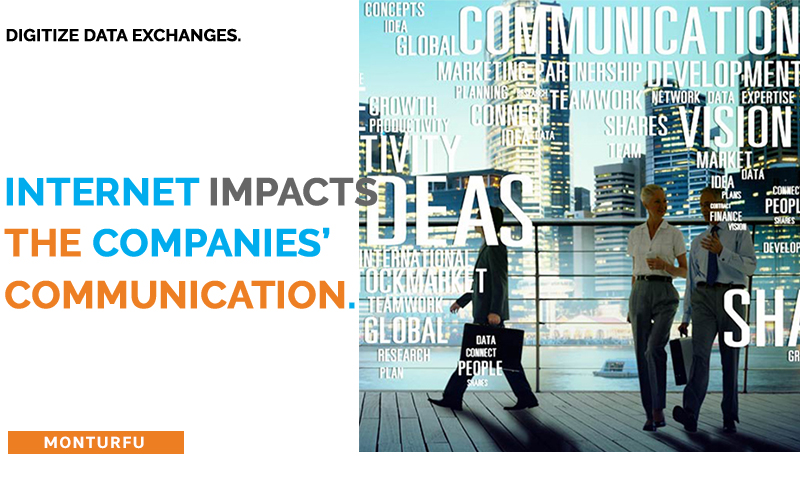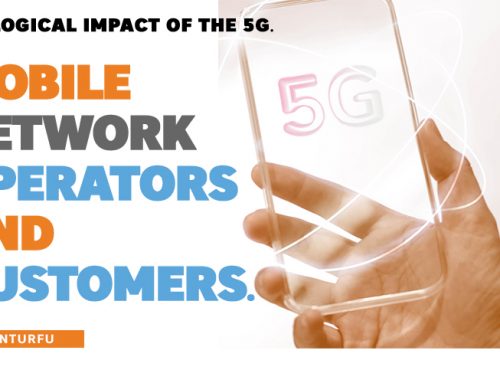DIGITIZE DATA EXCHANGES.
INTERNET IMPACTS THE
COMPANIES’ COMMUNICATION.
Today, the world’s population is approximately 7.9 billion. Internet users surf for information, socialization, education and entertainment. Finding information, 61%, staying in touch with their loved ones, 55.2% and keeping up to date with the latest events and news, 53.1% are the 3 main reasons why Internet users connect to the Internet according to Hootsuite, We are social figures of January 2022. More specifically they represent almost 80% of the population.
And on January 18, 2022 the INSEE declared 67.8 million inhabitants according to its assessment of the French demography in 2021.
Digitize data exchanges to survive.
Faced with the various changes in customer consumption habits, companies must adapt and update their means of communication. With the rise of the web, the continuous development of applications and digital innovations, companies must master the digital tool to remain competitive. Because paradigms are changing. And from now on, the digital transformation places the customer, instead of the product, at the heart of its organization. As a result, companies are integrating digital into their business strategies and readjusting their business model.
The hyper-connectivity of consumers.
According to DataReportal’s Digital 2022 Report, Internet users use the Internet for their personal and professional development. Thus, 51% of people use it to learn something and 47% to find inspiration. 90.7% of Internet users connect to the Internet from their cell phone, compared to 71.2% on a computer. In any case, 67.1% of the world’s population owns a cell phone and 62.5% uses the Internet. In addition, the 16-64 year olds spend an average of 6h 58mn per day on the Internet.
Digitizing data exchanges, transforming objects and processes into IT tools.
Dematerialization, digitalization, automated trust processes, virtualization and Artificial Intelligence affect all sectors or areas of economic activity without exception. And on the other hand, they impact all types of companies. Including Very Small Businesses, VSEs, Small and Medium Enterprises, SMEs, Intermediate Size Enterprises, ISEs, Large Enterprises, Business to Business, B2B, and Business to Consumer, B2C.
The prerequisite for successful digitization.
Indeed, the digital implementation generally implies a modification of the internal organization but also of the corporate culture. Thus, to give itself a new clear vision and SMART objectives, Specific, Measurable, Acceptable, Realistic and time-bound, the company reviews its particularities. This includes its strengths, weaknesses, risks and opportunities. As a result, it optimizes its ability to innovate and create even more value.
Digitize data exchanges, the health crisis of 2019-2021.
The crisis of 2020-2021 accelerates the race towards more digital. The needs are all the more glaring when you are dealing with a large company. For the latter, the rigidity of its historical models and its short-term vision for reasons of stock market quotation hinder the fluidity of its digitalization. Thus, large French retailers favor partnerships with GAFAMs because they need to manage their international presence. They then abandon their local communication strategy or their logistics to such powerful partners as Facebook or Amazon.
The essential post-crisis digitalization.
Today, the website is the first contact between a consumer and a company. This digital encounter allows the customer to evaluate the company’s products, services and offers. However, until the health crisis of 2020-2021, for several sectors, retail, tourism, media, etc., digital is only a possible choice to diversify its economic model. It is clear that in 2022, digital business is inseparable from the success of all companies. Thus, digital has its own codes, uses and rules. And moreover, any transposition of the offline model is futile. Moreover, digital is not a substitute for physical commerce. And finally, digital completes the historical channels by giving consumers a maximum of initiatives.
Digitize data exchanges, what is business communication ?
Corporate communication is the set of actions put in place to promote a brand to its customers and different stakeholders. Of course, these different actions have specific objectives. Namely, to strengthen the company’s reputation, improve its brand image. Or to increase contacts with prospects who represent the potential customers of the company.
The history of communication.
In 1963 Roman Jakobson, professor at Harvard University, insists on 6 functions and their role in communication. Thus we have the expressive function, the metalinguistic, the poetic etc. A little earlier in the years 1950, an American school of thought, Palo Alto models a communication where the actors are at the same time transmitters and receivers.
Digitize data exchanges, communication and advertising.
In 1948, Harold Dwight Lasswell, a pioneer in the study of mass communication, sent out a model based on the process of persuasion and influence of communication. This is the 5W model, Who says What to Whom through What channel and with What effect ?
The schematic of human communication.
And still in 1948, the engineer Claude E. Shannon and the mathematician Warren Weaver, proposed a clear and efficient model that is still used today to schematize the understanding of human communication.
- The source of the information states a message,
- The transmitter codes it and transforms it into a signal,
- The signal travels through a channel,
- The receiver decodes the signal and reconstitutes the message.
- The receiver transmits the message to the recipient.
Digitize data exchanges, the three types of communication.
Either the communication is internal to the company, or the company carries out an external communication campaign. In any case, 3 types of communication govern these different approaches. We have interpersonal communication, group communication and finally mass communication. We are talking about the Internet, cinema, television, press, radio and posters; everything is used. Nevertheless, corporate communication starts with the target and the audience. In order to be relevant in the approach and to optimize the specific communication efforts.
Internal communication.
In this case, the company directs the communication to its own organization. Most of the time it is to organize employees and colleagues, to inform employees or to mobilize internal partners.
Digitize data exchanges and external communication.
This time the communication goes outside the company. It is aimed at the company’s target audience or at the whole of its audience. In such an approach, the company seeks the acquisition of new prospects or customer loyalty. At the same time, it reinforces its brand identity.
Offline.
An offline player is in a traditional approach. It uses non-digital methods and schemes. Conventional industries still use this approach. This actor operates traditional media such as press, television and radio for example. It effectively reaches a target of baby-boomers. The number of offline actors is decreasing more and more with the democratization of the Internet.
Digitize data exchanges, the Pure Player.
The pure player is diametrically opposed to the offline player. Because its activities are concentrated exclusively on the Internet. Therefore, it has no physical locations.
Actor 360.
On the other hand, the 360 actor is more complete in its approach. Insofar as it optimizes online and offline channels.
Ok de-MEDEIROS
SOURCES :
https://www.indicerh.net/digitalisation-des-entreprises-retour-vers-le-futur/, https://www.entreprendre.fr/pme-eti-vous-avez-deja-la-carte-maitresse-pour-gagner-la-course-a-la-digitalisation/, https://www.dynamique-mag.com/article/banque-finance-digitalisation-atout-professionnels.69686, https://www.7×7.press/7-grandes-tendances-technologiques-en-2022#newsletterModal, https://www.mindmedia.fr/marques-agences/comment-concilier-branding-et-performance-a-lere-de-la-data-et-du-e-commerce/, https://www.entreprendre.fr/quels-sont-les-avantages-de-la-digitalisation-des-fonctions-rh-en-entreprise/, https://www.journaldunet.com/management/commercial/1507285-pourquoi-est-il-indispensable-de-digitaliser-les-entreprises-de-service/, https://www.dynamique-mag.com/article/orel-simon-fondateur-spoa-digitalisation-action-necessaire.52706






Laisser un commentaire